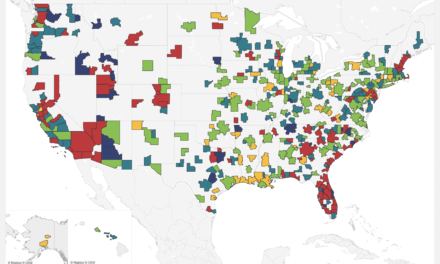The controversial approval of the first-of-its kind retail tax abatement in Memphis and Shelby County for IKEA runs the risk of the EDGE board winning the battle and losing the war.
Clearly, the first volley was fired by Memphis City Council Member Wanda Halbert, whose frustration reached the point that she raised the prospect of the city’s legislative body taking back the power to approve PILOTs that it (and the Shelby County Board of Commissioners) had delegated to EDGE.
It may appear to be a drastic action by Ms. Halbert, but anyone who is attune to the Council’s mood about the free-flowing approvals of corporate tax freezes could have seen it coming. The fact that EDGE either did not see it coming or knew about the concerns and chose to ignore them says volumes about the lack of interest that city legislators have felt from EDGE for some time.
This lack of interest in their opinions was confirmed for many when EDGE decided to go full speed ahead when City Council members had loudly expressed their concerns about the IKEA tax freeze was essentially seen as the city-county economic development board sticking its finger in their eyes.
Council Has Options
While the likelihood of reversing EDGE’s tax freeze powers is not expected to gain enough momentum for passage, it should be clear that something different has to be done to address Council frustration.
Making things interesting is the fact that Ms. Halbert is at the zenith of her influence on City Council with her EDGE shot across the bow coming on the heels of her pivotal leadership in delivering the city pension reform that was strongly supported by the business community. Because of it, politically savvy business leaders should take her concerns seriously.
That said, there are options that City Council can take that are short of City Council taking back EDGE’s PILOT power, chiefly limiting EDGE’s powers or requiring regular reporting on tax abatements.
Options for Action
What City Council giveth, it can taketh away. It did not just delegate its authority to waive taxes; it also set the limits to that authority. In other words, City Council could pass a resolution that either eliminates retail as an accepted use of PILOTs or it could require that any retail projects in the future would require Council review and action.
That said, some people have raised the question about EDGE’s power to add retail without City Council approval. EDGE officials clearly believe that Council approval was not needed, but some old timers in City Hall remember when the Center City Revenue Finance Corporation requested City Council to approve its addition of retail as a target use for its PILOTs.
In addition, there is one Council member who questions whether the Council should weigh in on the EDGE structure so it is consistent with other public boards, where their members have authority over their staff. At EDGE, the head of the agency reports to the city and county mayors, not to the board, contributing to City Council feeling that they are generally ignored in the agency’s dealings.
Nothing Is Easy
Finally, it has been suggested that EDGE should be submitting regular reports to City Council about the amount of taxes being waived, and the changes being considered by Government Accounting Standards Board (GASB) could serve as inspiration for a push in that direction.
GASB, the independent organization that establishes and improves standards of accounting and financial reporting for state and local governments, is developing disclosure guidelines that would force governments to annually report tax abatements for economic development. In the new rules, which would affect budgets beginning next year, agencies would be required to report to legislators and the public how much tax money is being abated and whether recipients are living up to their agreements.
This kind of information sounds basic, but today, it is not easily accessible (and not available on the EDGE website). To determine the amount of city property taxes being waived, city officials need to get the PILOT report from Shelby County Trustee David Lenoir, but because his office only tracks county taxes, officials would then have to figure out which properties are within the city of Memphis, total the amount of county taxes being waived and calculate the proportional amount of city taxes.
Put simply, conventional wisdom to the contrary, Memphis City Council does have several options for action, all the way from better reporting to the nuclear option of withdrawing authority for EDGE to grant tax waivers.
Change Is Gonna Come
Within days of giving IDEA its pass on $9.5 million in city and county taxes over 11 years, EDGE rolled out changes to its application process and its criteria, including a new program giving tax freezes for a handful of community development-oriented projects. It should be well-received in City Hall, but whether it can assuage the angst on City Council remains to be seen, particularly since it gives the mayors a specific role to play in approving the projects but omits any involvement by City Council.
There are other provisions in the changes that are likely to get serious Council attention, and we’ll post more about them in coming days from experts on tax abatement issues.
Meanwhile, to compound the political ripples caused by the IKEA tax waiver, Simon Property Group – owner of Oak Court Mall and Wolfchase Galleria and former owner of Raleigh Springs Mall – has taken notice of the tax abatement in light of their requests for more than a decade for city and county financial incentives that could address its financial challenges in Memphis. As the Council predicted, it’s hard to imagine that other retailers won’t try to get a tax freeze, and it’s hard to imagine that Simon Property Group won’t be at the top of that list.
Also, IKEA has already joined the companies who don’t pay taxes, but want more and better services. The ink was barely dry on its tax abatement agreement before the company asked for MATA to provide better transit to its store. It’s hard not to imagine how $9.5 million would have gone a long way to paying for it.





I look forward to your future posts on newly recommended rules for the PILOT program. The proposed changes, as shown on EDGE’s web site, are difficult to understand but don’t appear to help Memphis’ economic development prospects. It will be just as easy to get greenfield (sprawl) approvals under new rules. If true, City Council may claw back some of EDGE’s power.
Logical conclusion of the EDGE’s current policy: give every business that employs more than 15 people a tax freeze
This is a disaster for Memphis. Giving away the future. It’s a vicious cycle and more will follow.
So, we completely ignore that IKEA will have paid more in taxes than the money saved by the PILOT? Sure. We also ignore that MATA improving its services is a good thing? OK.
Also, malls wouldn’t qualify for PILOTs because they don’t employ enough people or provide the kind of wages that IKEA can and will. Their project is quiet different than a retailer locating in a strip mall or even a enclosed mall.
IKEA stated that most of their jobs only pay about $40,000 average. That’s not a lot of money and many of the jobs will be part time and much lower wages. Retail salaries have little of the value of higher wage professional and technical positions.
I just don’t see how this is beneficial long term. I hughly doubt many other cities would even consider such incentives for big box retailers like IKEA. Memphis govt officials are real suckers for anything.
Mediaverse: As we’ve written before, the cost/benefit analysis is limited at best. It does not include the costs of the public services that IKEA will need or use and whose costs are being shifted to homeowners and small business owners. That’s why we have said in the past that EDGE should simply quit issuing these analyses since they have no serious credibility as real impact statements or ROI statements.
As for malls, the issue is politics. It’s not that malls can’t apply. We now know that the rules can be changed to allow anyone to apply. When Simon asked for incentives from city and county in the past, they were always told that local government doesn’t give incentives for retail. Well, now there’s a precedent.
Anonymous: As for the average wages, the problem with the EDGE calculations is that they are not median wages, but average wages. That allows companies to lard in the high salaries of their CEOs and management to jack up the average.
EDGE was created to give tax abatements. Why is anyone surprised that is what they do for anyone who asks? I think I have I missed their refusals. IKEA would have been crazy not to ask. Who would refuse free money?
When you are a hammer, every problem is a nail.
PILOT programs should be used only for companies that will employ workers making substantially high wages than a retail furniture store like IKEA. It’s just not worth it. I’ll bet IKEA doesn’t get such tax relief in many other cities. Shows how desperate our city leadership is that they’ll give them to practically anybody.
From The Wall Street Journal:
Google Fiber to announce four new cities on January 27 — Atlanta, Nashville, Charlotte, Raleigh/Durham are the winners.
Memphis wasn’t even on the list of cities being considered.
I’d take Google fiber over IKEA’s cheap furniture any day.
And those cities won’t have to give PILOTS either.
If Google Fiber came here we would give them PILOT!
Anon 8:48-
Care to relate that to the topic of this post?
Anon 10:22,
Too true. What will it take to wake up those that run EDGE and other leaders?
About that google news: living in any one of those cities does not garauntee service. Service will be provided on a neighborhood by neighborhood basis. Chattanooga’s internet/ data infrastructure makes Nashville look like its in the dark ages. No wonder google is going in there- its easy to sell fire to a place where the avg person is in the www stone age.
Anon: 11:20
Google Fiber, like everything that company does, is state of the art, not Stone Age.
Memphis, like most other U.S. cities, can only dream of being on the list of potential Google Fiber cities, let alone being selected.
This will be absolutely huge for the future economic growth of each city where Google has invested.
Atlanta, Nashville, Charlotte and Raleigh are the leading tech cities of the entire South.
I guess that means MLGW will have to lead Memphis into the digital future!
Anon 12:00
Great sarcasm. MLGW sold our fiber optic backbone to a private company, which is now traded on NYSE. Before sale we were in position to create a Chattanooga type system.
MLGW is a pathetic dinosaur. One single city govt. entity running 3 utilities is a real stretch to begin with. I doubt they’d ever be able to handle broadband. MLG W has more do nothing cronies than you can shake a stick at!
Congrats to Nashville on this. One of numerous economic develop home runs in Music City. I’d take a city wide Google Fiber network over an Ikea furniture store any time.
We can debate the merits of financial incentives for business development/attraction. We cannot debate that they exist everywhere and they are a real part of the economic development landscape.
St. Louis approved a $32 million tax incentive for IKEA. Most of Nashville’s signature projects (and some not so fancy ones) are heavily dependent on TIF Districts which remove any increase in tax revenue from large swaths of town from the roles for 30 years (3 or 4 times as long as the average site specific PILOT we use).
Atlanta, Mecklenberg County and Raleigh each have aggressive financial incentives. The difference in these places is that the state governments play a stronger role (similar to Mississippi).
Finally (and unrelated to above) our Google fiber concern should not be that we lost to these other places. The concern should be that Metro Memphis ranks 94 out of the 100 largest metros for residences with high-speed broadband. This is not because we don’t have access to it. Why would a new provider invest in this market over others who already subscribe to an internet service? How do we help literally hundreds of thousands who today do not connect to the rest of the world online when a service is already available?
John: But do they exist everywhere? Memphis/Shelby County have given more PILOTs over 10 years than any city/county we can find. It’s one thing to have PILOTs in the tool kit. It’s another for them to be so common they are entitlements.
Don’t disagree that we need to expand the toolkit. Other communities depend on bond issues, TIF districts, Special Assesment Districts, loan programs, tax rebates, land write downs, cash grants, infrastructure improvements, workforce training subsidies. We are slowly getting into the broader game. PILOTs should not be the only tool but, in many cases, it is better for the taxpayer than some alternatives.
Learned just today that Milwaukee has approved its 82nd TIF district. Eighty-Two. They create a district that funnels all increased tax revenue from the areas to projects for 27 years. They’re doing everything from industrial land acquisition to lakefront condos. They are creating connections to park space (obvious public interest) and new buildings for banks (don’t they already have all the money?) Some amazing stuff. Some failures. This is their one-trick-pony. But it is embraced big time.
There seems to be tremendous front end planning and extraordinary long-term follow through on most of their deals… Both things this community could probably aspire to improving. BUT.. How would our community and leadership feel about trading 27 years of taxes for the next industrial or hotel project? You remember when we used to do 25 year 100% PILOTs. We went through a whole lot of grief then. Now we are upset about about 11 year 75% PILOTs.
And Chicago has many, many more TIFs than Milwaukee. And Nashville has dozens of them. We’ve blogged about the need to expand the toolbox before and specifically, we’ve blogged about a wider use of TIFs here. We prefer TIFs because at least in those cases the businesses are paying their taxes which are then used to pay for infrastructure costs. In our opinion at least, it’s not as onerous as the overreliance on tax holidays that we have now.
We have also blogged that we are not in the “do away with the PILOTs” group although their concerns are understandable. Our concern is that they so often fail the “but for” test and as a result, they are merely lagniappe for companies that would come here anyway, not to mention that we’re still giving PILOTs to distribution companies that don’t pay a living wage for an adult and a child.
People aren’t upset about the 11 year 75% PILOT itself (although the 75% was mandated by city and county legislative bodies and it was not scaled back by EDGE because of its concern about tax base erosion). The reason people are upset is that retail is now added to the list and there’s the feeling that the city and county are like that old joke that says “now we know what you are, we’re just haggling over the price.”
Your reference to GASB standards is timely. See the proposed standards (http://www.gasb.org/jsp/GASB/Document_C/GASBDocumentPage?cid=1176164497029&acceptedDisclaimer=true) and comments received so far (http://www.gasb.org/jsp/GASB/Page/GASBSectionPage&cid=1176157116776) .
Advocates for more complete disclosure are asking GASB to include incentives such as PILOT in its definition of tax abatement and to include disclosure by company and site. For example, McKesson Corporation moved a distribution center and regional office from Memphis to Olive Branch in 2012. At least four other Memphis sites remained in operation and received PILOTs. Disclosure by company and site would make clearer the impact of McKesson’s partial move to citizens and bond rating agencies.